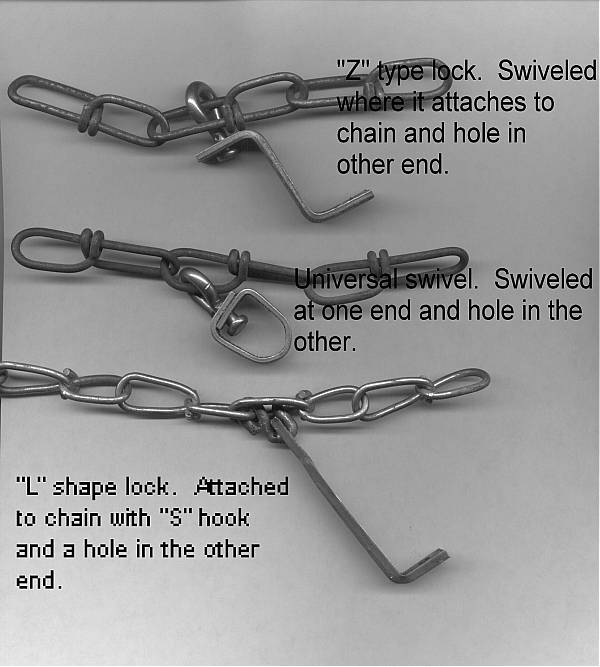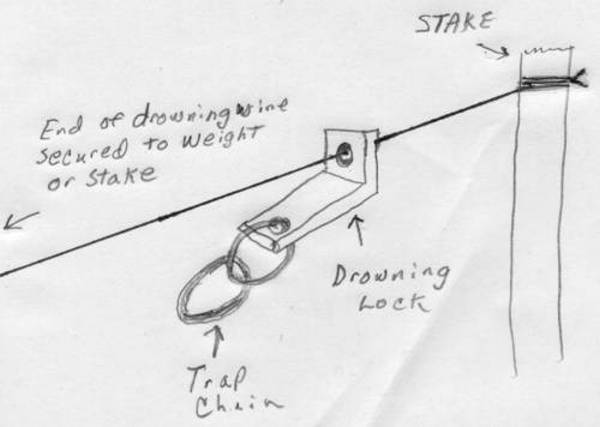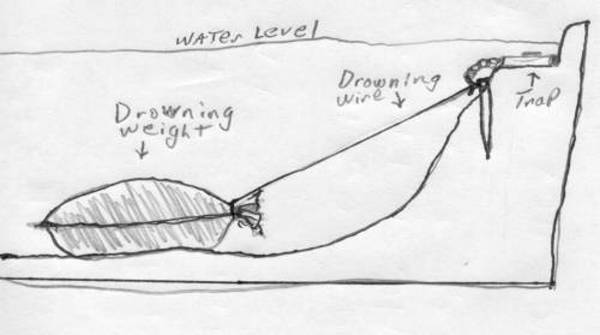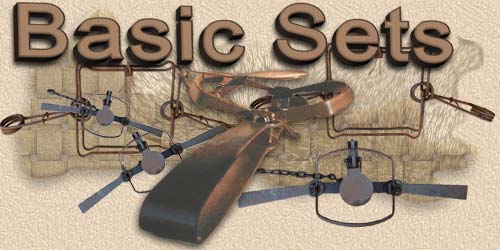| A humane method of dealing with animals caught in sets in or near water
is to rig the trap for drowning. This will cause the animal to drown
shortly after being caught and will minimize the chance for the animal
to escape.
Materials needed are wire or cable, stakes, drowning lock attached to
the trap chain and drowning weights.
The size of the wire used will be dependent upon the animal targeted
or the largest animal that may get caught. For mink, muskrat, raccoon
and nutria, 14 gauge wire works well. For beaver and otter, 11 -
12 gauge works well. If cable is used, 3/32 or 1/8 cable will work
well.
Wooden, or metal stakes work well at the bank to secure the upper end
of the wire to. The length of the stake will depend on what kind
of soil is in the bank. A clay type soil will require a shorter stake
than a sandy bank. I like my stakes to be from 15 - 30 inches long.
A stake may also be used at the deep water end of the wire if mink, muskrat
and raccoon are targeted and if the bottom is not mostly rock. Beavers
need something more substantial, normally.
A drowning lock can be a peice of metal bent at 90 degrees with holes
in each end, a "Z" type lock, or a standard swivel as shown below.

The deep water end of the drowner wire or cable needs to be secured
either by a stake or a weight sufficient to keep the targeted animal on
the bottom. Window weights, cinder blocks, milk jugs filled with
sand, ect can be used for mink, muskrat and raccoon. For beavers
I prefer to use sand bags filled with material amounting to 35 to 40 pounds.
Where the bottom of the stream or pond is hard packed, a heavier weight
is needed than a bottom that is soft. The animal will be able to
more easily drag a weight on the bottom if the bottom is hard.
To set up the drowning rig, the wire or cable has to be staked at the
bank and secured by a stake or weight in deep water. Keep the wire
or cable as tight as possible to prevent the animal from fouling the wire
or cable.
Example of an "L" lock on a drowning wire

Example of the drowner setup with a sandbag

|



